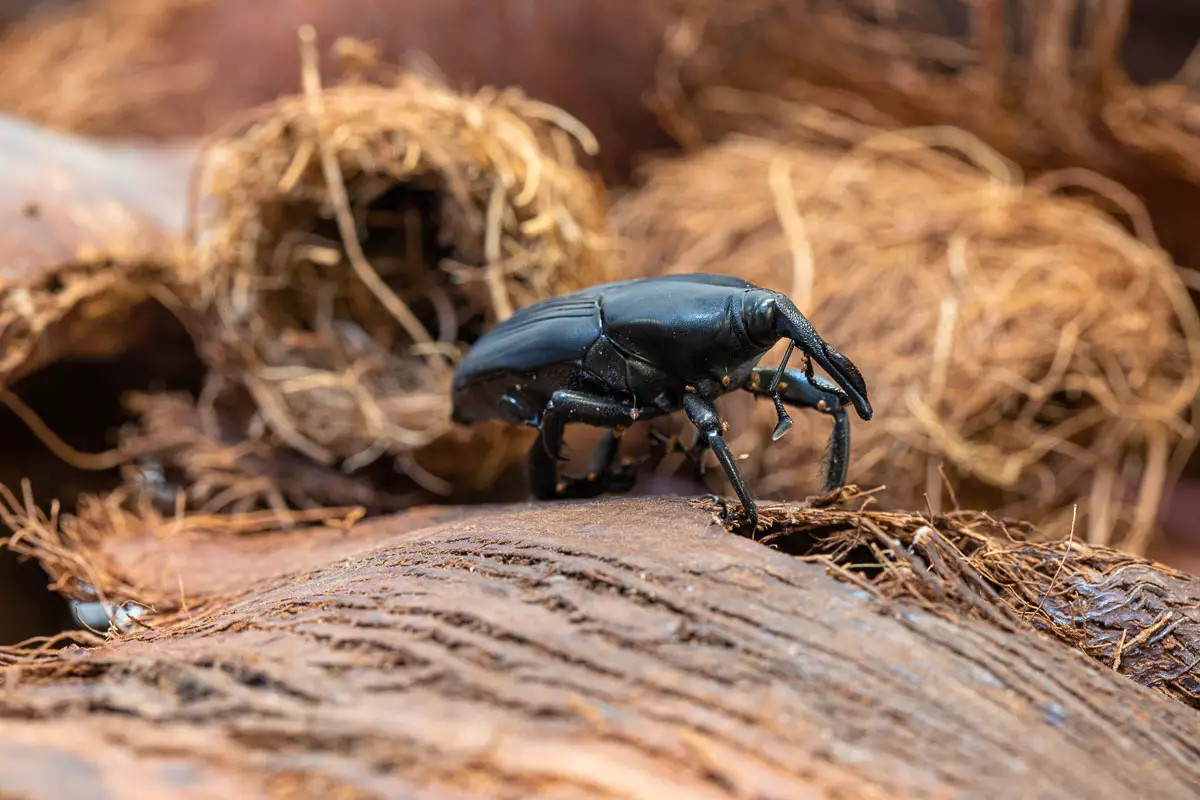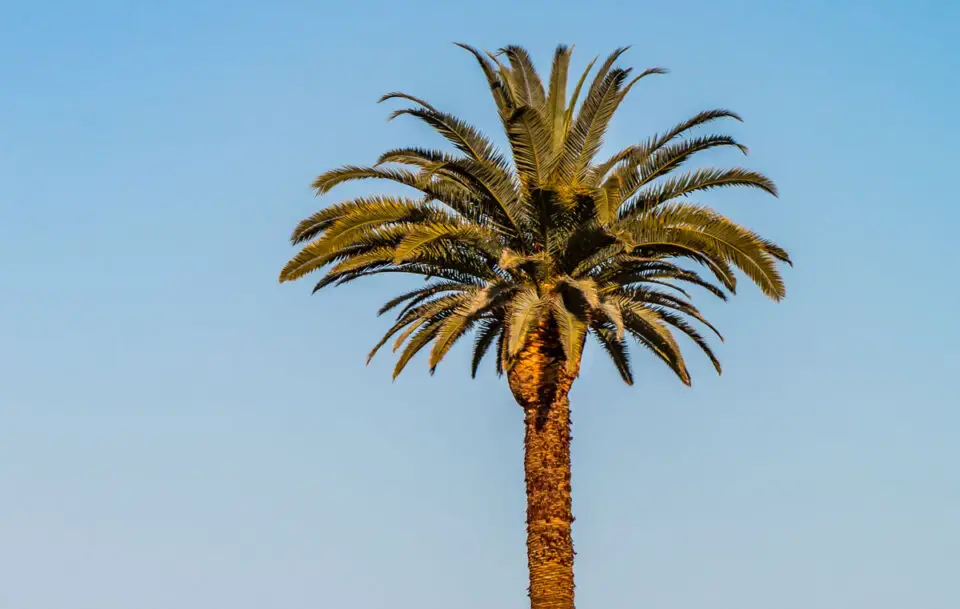ENCINITAS — The Encinitas City Council recently approved a chemical treatment plan to prevent beetle infestations from attacking a historic Canary Island date palm at Moonlight Beach, but other infected palms across the city will be removed.
The council voted 5-0 on March 27 to adopt a five-year plan to eliminate the South American palm weevil infestation from the towering Moonlight palm, which was designated heritage status last year.
The treatment plan will include applying a preventative chemical to the heritage tree and removing other infested palms identified during regular inspections. According to the city, the plan will cost $382,250 over five years.
“In Encinitas, palms are regularly inspected for signs and symptoms of the weevil. As of January 2024, 67 city-owned palms have been reported to be infested,” according to Dudek, the city’s environmental consulting firm. “Palms can be treated with systemic insecticides before infestation occurs to protect against a weevil attack. Once trees are infested, rapid palm removal is recommended to prevent further spread.”
According to city parks employee Katrina Burritt, the city has approximately 226 Canary Island palms in parks and along roadways. The newly approved policy will require regular inspections of those trees for beetle infestations and the removal of the tree if an infestation is discovered.
To apply the treatment, crews will trim dead or dying fronds before applying pesticide to the crown and injecting a nutrient solution at the base four times a year. However, the pesticide is a neonicotinoid chemical, which poses a risk to bees. As a designated Bee City USA, Encinitas officials are prohibited from using this pesticide on city-owned trees and must seek an exception to preserve its status.
The South American palm weevil is a non-native snout beetle that feeds on palms. It was first detected in 2011 and has established populations in San Diego County.

Weevils pose a serious threat to Canary Island date palms in California. Larvae infestations in the palm heart, a fleshy material in the crown of the tree responsible for growing new fronds, can kill essential tree tissues and prevent the production of new fronds. Once the tissue is destroyed, the palm tree dies.
Adult weevils, reportedly capable of flying up to 15 miles per day (but rarely do), are also responsible for red ring nematodes, which lead to red ring disease.
According to a study by UC Riverside, “Nematodes reside within the bodies of adult weevils and are deposited in palms when weevils feed, defecate, or lay eggs.”
Symptoms of a sick palm infested with palm weevils include yellowing of foliage, flattening of the crown, pupal cases on the ground, and holes/frass or tunnels at the base of fronds.
“Infested trees are more likely to litter fruit, fronds, and other plant material. If the infestation is not managed, trunk breaking or crown toppling have been reported. Unmanaged trees present a safety risk if they are in yards, streets, and other urban areas,” according to Dudek’s report.
Adult weevils will feed on avocados, pineapple, papaya, citrus, mango, banana and guava. Since January 2023, 54 Canary Island date palms have been removed, with 45 from the public right-of-way (19% mortality rate) and 12 from parks (27% mortality rate) in Encinitas.
Early detection is difficult, according to the city. No biological control is available in California, and palms can only be treated prophylactically (using a chemical preventative).
In Del Mar, the city has been wrestling with South American palm weevils over the past year, working with the city arborist to continue treating local infested trees. According to the city, 43 historic Canary Island date palms along Coast Boulevard and other locations across the city have shown signs of infestation as the pest infects trees across the region.
When these palms are unavailable, the palm weevils can infest açaí palm (cultivated for its hearts of palm), African oil palm, coco de palmito, coconut, edible date palm and sago palm.
Palm infestations can be reported at cisr.ucr.edu/palmarum_survey.html.
Jordan P. Ingram contributed to this report.




